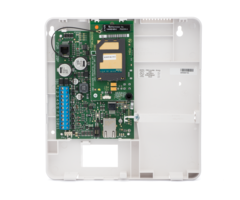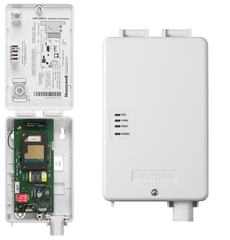Hi DIYers! We are happy to announce that we are offering a sale on the iGSMV4G and the iGSMV4G-TC2 effective immediately. The iGSMV4G can be purchased for $50. The iGSMV4G-TC2 is available for $60. These are AT&T 4G Cellular Communicators that allow VISTA Panels to connect with AlarmNet360.

Earlier this year, AT&T announced the sunset of their 3G and 4G networks. By February 2022, it will no longer be possible to use an AT&T 3G/4G with your alarm system. You must upgrade to an LTE communicator by then. Additionally, AlarmNet will no longer allow activations for AT&T 3G Communicators and AT&T 4G Communicators starting Wednesday June 26th, 2019.
We still have some iGSMV4G and iGSMV4G-TC2 products in stock. We want to get rid of them before they become unusable. This is a perfect opportunity to get your Resideo VISTA System online for a very low price. With these communicators, you can access Total Connect 2.0 and use all of the available features. Please note that you will need a Gold Plan or higher to activate a cellular communicator with Alarm Grid. Also, we cannot offer overnight orders for these products.
If you do get one of these communicators, you must activate the module before June 26th. After that date, it will be impossible to activate the cellular portion of the communicator. Additionally, if you deactivate the communicator or discontinue service for any reason, you will not be able to reactivate this unit for cellular service after June 26th. You will still be able to use the communicator for Internet Communication only after this date.
Resideo has stated that more recently manufactured modules will be able to be activated for up to 180 days after June 26th. However, we cannot guarantee that a new iGSMV4G will be able to be activated after that date. For your own planning, you should not expect an AT&T 3G or 4G communicator to be activated after June 26th.
The Honeywell iGSMV4G is a dual-path AlarmNet Communicator for Resideo VISTA Series Systems. It uses AT&T 4G and hardwired ethernet to connect with the AlarmNet Servers and provide access to Total Connect 2.0. This module will provide fast and reliable connectivity until February 2022. The cellular portion of the module will no longer work after February 2022. At that time, you will want to upgrade to a newer LTE communicator. We are offering the iGSMV4G for $50.
The Honeywell iGSMV4G-TC2 is a bundled kit that includes the iGSMV4G module, as well as the necessary PROM Chip upgrades for the VISTA-15P and VISTA-20P Alarm Systems. You should purchase this kit if your 15P or 20P System is running a firmware version of at least 2.0, but less than 9.12. Any 15P or 20P system running less than version 9.12 will not be able to be used with Total Connect 2.0. We are offering this kit for $60.
If you aren't sure what firmware version your system is running, you can check the current PROM Chip. This is a small black chip located in the middle of the system. This FAQ can teach you how to replace an old PROM Chip if needed.
Here is an example of a PROM Chip for a VISTA-20PSIA System. This is basically a VISTA-20P System with some added features put in place to prevent false alarms. Note that this system is running v10.23, which is high enough to use TC2.

If you want to future-proof your VISTA System with an LTE communicator, then we can certainly help you with that as well. We currently offer the Honeywell LTE-XA (AT&T LTE), the Honeywell LTE-XV (Verizon LTE) and the Honeywell LTE-IV (dual-path Verizon LTE and IP ethernet). All of these communicators will extend the life of your VISTA System well into the very distant future.
Keep in mind that a VISTA-15P or VISTA-20P System will need to be running at least firmware version 9.12 to support Total Connect 2.0. A VISTA-21iP must be running at least version 3.13 to support TC2. We offer PROM Chip upgrades for VISTA-21iP Systems here. We do not offer bundled kits for VISTA-21iP PROM Chips. The PROM Chips included in the iGSMV4G-TC2 Kit are for 15P and 20P Systems only.
Remember, we cannot offer overnight orders for either the iGSMV4G or the iGSMV4G-TC2. You must activate these communicators before June 26th. They can remain active until February 2022. After that, you must upgrade to an LTE communicator or use IP only communication. If you have any questions about this sale or these communicators, please contact us at support@alarmgrid.com. We look forward to hearing from you.













